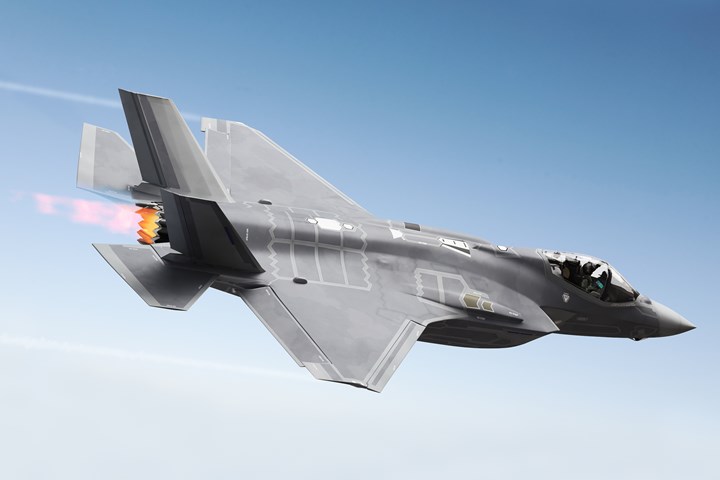F-35 Lightning program adopts closed molding technology
Reduced manufacturing time and high part-to-part dimensional repeatability are some benefits of Matrix Composites’ HiRPM molding technology.

Source | Matrix Composites
Global aerospace composite manufacturer Matrix Composites (Rockledge, Fla., U.S.) an ITT Inc. company, announced on May 27 that its closed molding technology, hot isostatic resin pressure molding (HiRPM), has been adopted into Lockheed Martin’s (Bethesda, Md., U.S.) F-35 Lightning program, and has been made the principal manufacturing process for select parts for future F-35 aircraft. The technology has already been used for select parts in the aircraft’s horizontal tail assembly.
Designed for small, intricate composite structures requiring high dimensional accuracy — like critical edges, spars and control surfaces — the HiRPM molding process enables high part-to-part dimensional repeatability, reduced manufacturing cycle time, increased production yield and reduces the need for expensive post-machining and other next-level assembly operations. Matrix Composites says its performance on the F-22 Raptor and the company’s history in composites processing were underlying factors for the company’s selection in Lockheed’s program. As a main supplier, the Matrix Composite team has also worked with Lockheed Martin to create the company’s variant of a controlled-volume-molding (CVM) process.
Related Content
-
Combining multifunctional thermoplastic composites, additive manufacturing for next-gen airframe structures
The DOMMINIO project combines AFP with 3D printed gyroid cores, embedded SHM sensors and smart materials for induction-driven disassembly of parts at end of life.
-
Plant tour: Airbus, Illescas, Spain
Airbus’ Illescas facility, featuring highly automated composites processes for the A350 lower wing cover and one-piece Section 19 fuselage barrels, works toward production ramp-ups and next-generation aircraft.
-
Otto Aviation launches Phantom 3500 business jet with all-composite airframe from Leonardo
Promising 60% less fuel burn and 90% less emissions using SAF, the super-laminar flow design with windowless fuselage will be built using RTM in Florida facility with certification slated for 2030.


